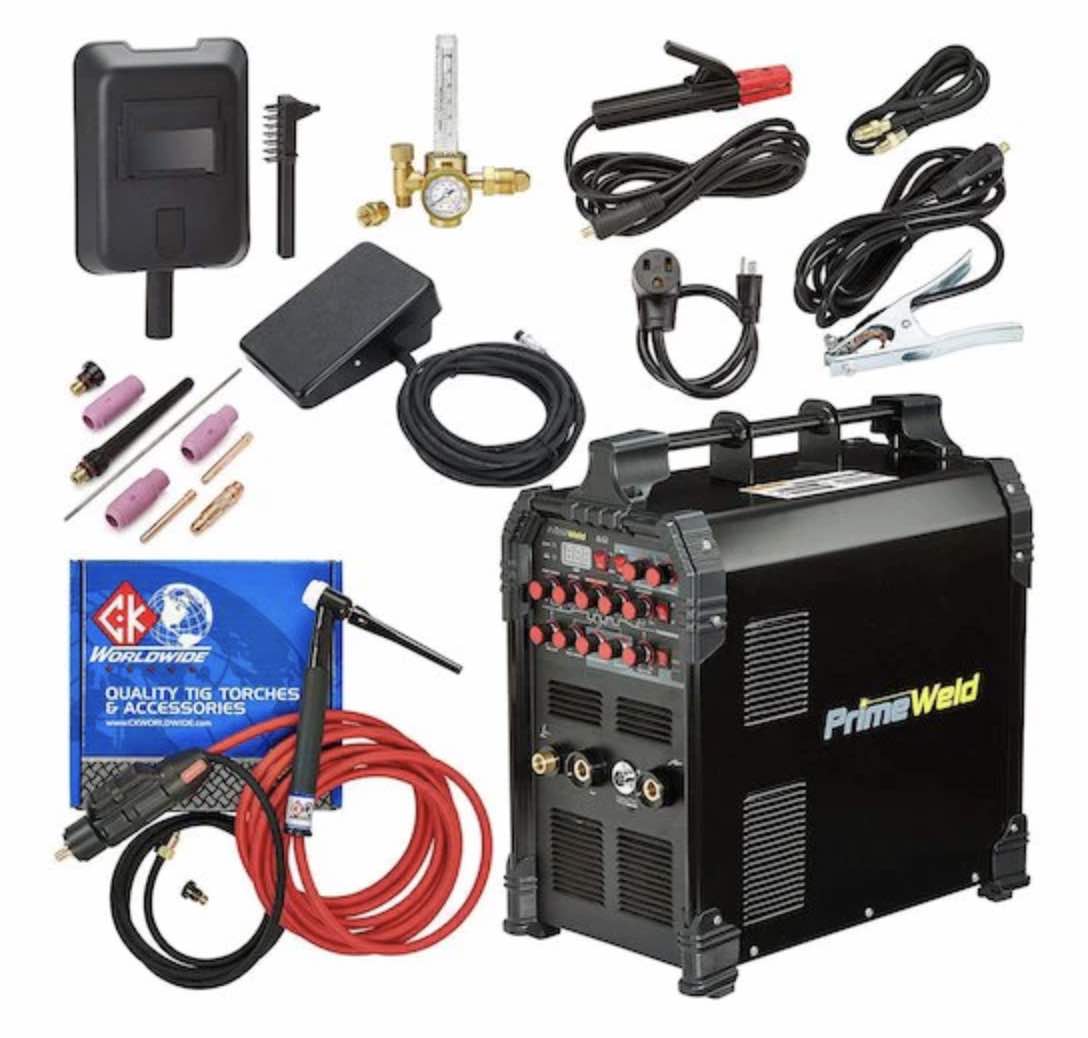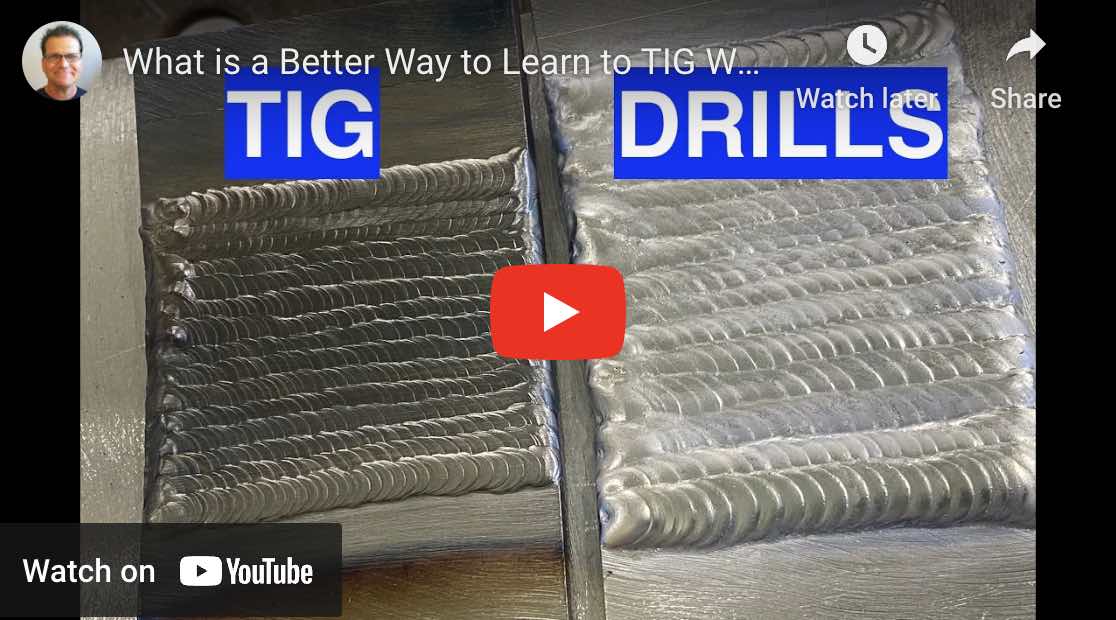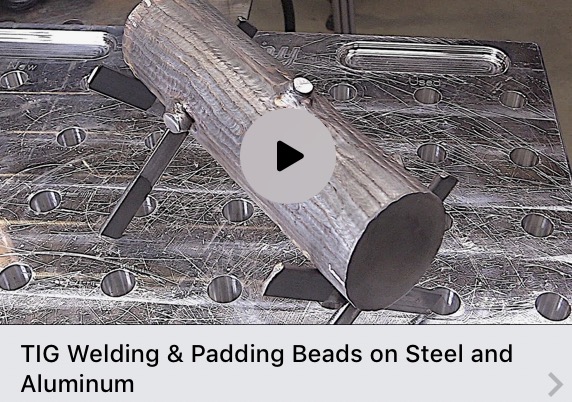How to TIG Weld Mild Steel
How to TIG weld mild steel - The basics of TIG welding mild steel and how to get started
- HOME
- TIG WELDING
- How to Tig Weld Mild Steel
Learn more about this affordable tig welder with bonus kit at weldmonger.com
### **Introduction**
So, you're interested in TIG welding mild steel? Awesome choice!
TIG welding, or Tungsten Inert Gas welding, is a precise and versatile method that works great for mild steel.
And once you learn how to tig weld mild steel, you can try learn aluminum , stainless steel, and other metals because TIG welding is just that versatile.
Whether you're a hobbyist or looking to start a career in welding, understanding the basics will set you up for success. Let's dive in and explore what you need to know to get started with TIG welding mild steel.
If you want to learn how to TIG weld mild steel, first things first.
What is TIG Welding?**
TIG welding stands for "Tungsten Inert Gas welding". The more updated technical term is Gas Tungsten Arc Welding (GTAW) and that is the term you will see on technical documents...but in everyday conversation, its called TIG more often than GTAW.
It's a process that uses a tungsten electrode to produce the arc.
The weld area is protected from atmospheric contamination by an inert shielding gas, usually argon. TIG welding is known for its ability to produce clean, precise, high-quality welds on a variety of metals.
### **Why Choose TIG Welding for Mild Steel?**
While MIG and Stick are sometimes a better choice for speed, TIG welding offers several advantages when working with mild steel. It provides excellent control over the welding process, allowing for precise and clean welds. This method is particularly useful for welding thin materials and creating aesthetically pleasing welds with no spatter. TIG welding is often used in industries like automotive, aerospace, pipe welding, pharmaceutical, food service piping, and anywhere precision and quality are the most important factors.
### **Understanding Mild Steel**
Mild steel, also known as low carbon steel, is a type of carbon steel with a low amount of carbon – typically around 0.05% to 0.25%. This makes it more malleable and ductile compared to higher carbon steels. It's widely used in construction, manufacturing, and many other applications due to its affordability and versatility.
Since mild steel is so affordable, it makes sense as the first metal you weld when learning to TIG weld.
Just a side note....I recommend tig welding aluminum as soon as possible even when learning to tig weld mild steel. I find it really helps speed up the learning curve.
### **Equipment for TIG Welding**
To get started with TIG welding, you'll need the right equipment:
- **TIG Welder**: A quality TIG welding machine is the first thing. There are lots of options. While you only need DC current to TIG weld mild steel, an AC DC tig welder opens up way more options like being able to tig weld aluminum and they don't really cost much more than a DC tig welder these days. A great option for an affordable AC DC tig welder is the primeweld TIG 225.
- **Tungsten Electrodes**: These come in various types and sizes. For mild steel, thoriated or ceriated tungsten electrodes are sometimes used but if you want a tungsten electrode that works for all metals, 2% lanthanated is a great all purpose tungsten electrode.
- **Filler Rods**: ER70S-2 and ER70S-6 are both a good choice for mild steel. ER70S-6 seems better for open butt full penetration welds but for everyday practice beads on mild steel plate, there is not much difference in the two.
- **Shielding Gas**: Argon is the most commonly used shielding gas for TIG welding mild steel. In fact, Argon might be the only gas you ever need.
- **Safety Gear**: Protect yourself with appropriate safety gear, including a welding helmet, gloves, and appropriate protective clothing.
### **Preparing Your Workspace**
A well-organized workspace helps for learning TIG welding. Ensure your area is well-ventilated and has adequate lighting. Remove any flammable materials and set up a clean, stable surface for your work. Proper ventilation will help protect you from harmful fumes, while good lighting will ensure you can see your work clearly.
### **Selecting the Right Tungsten Electrode**
The type of tungsten electrode you choose can affect the quality of your weld. For mild steel, 2% thoriated (red) or ceriated (orange) tungsten electrodes are commonly recommended. The size of the electrode will depend on the thickness of the material you're welding and the amperage you need. Typically, a 3/32-inch electrode works well for mild steel up to 250 amps on mild steel.
A 1/16" tungsten helps for really thin metal and provides better arc starts at low amperage.
### **Choosing the Correct Filler Rod**
Filler rods play a crucial role in the welding process. For mild steel, ER70S-2 filler rods are a great choice. They provide good tensile strength and produce clean, strong welds. Ensure that the filler rod matches the base material to achieve the best results.
### **Setting Up the TIG Welder**
Before you start welding, it's important to set up your TIG welder correctly. Adjust the amperage based on the thickness of the mild steel. A general rule of thumb is to use 1 amp per 0.001 inch of material thickness. Also, set the flow rate of the shielding gas based on the size cup used.
A rule of thumb for setting cubic feet per hour (CFH) of argon is cup size multiplied by 2-3 depending on any breeze in your shop. if there is no draft or breeze cup size times 2 will be fine and save some gas.
### **Preparing Mild Steel for Welding**
Proper preparation of the mild steel is key to achieving high-quality welds. Clean the surface of the steel to remove any rust, oil, or dirt. For hot rolled steel, a grinder or flap disc will help remove mill scale. All mill scale must be completely removed for best results....not just polished over.
### **TIG Welding Techniques**
Mastering basic TIG welding techniques will improve the quality of your work. Maintain a steady torch angle and consistent arc length.
A good rule of thumb for arc length is diameter of tungsten electrode used or less. Practice moving smoothly and consistently to create even, well-formed welds.
### **Common Issues and Troubleshooting**
Even with practice, you might encounter some common issues while TIG welding mild steel. Problems like porosity or contamination can occur. To troubleshoot, ensure your materials are clean, check your shielding gas flow, and adjust your welder settings as needed. Practice makes perfect, so don't get discouraged if your first few welds aren't flawless.
### **Safety Precautions**
Safety should always be a top priority when welding. Wear a welding helmet with the appropriate shade to protect your eyes from the bright arc. Use gloves and long-sleeved clothing to protect your skin from burns and UV radiation. Ensure your workspace is free from flammable materials, and always have a fire extinguisher nearby.
### **Advanced Tips for Better Welds**
As you gain experience, you'll want to refine your technique to produce even better welds. Focus on consistency – maintaining a steady hand and even arc length is crucial. Experiment with different settings and techniques to see what works best for you. Remember, practice is key to becoming proficient in TIG welding.
There are over a thousand pages on this site with over 700 videos


















